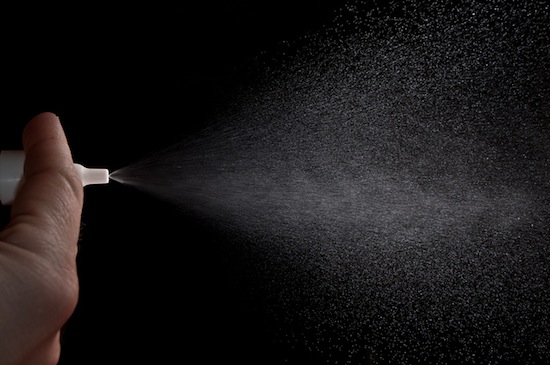Spray For Cleaning Ship Hulls Could Relieve Your Really, Really Bad Sinusitis
Do you suffer from sinusitis? Like, really bad sinusitis? Sinusitis that you would describe as “nightmarish” or… well, you get the point. No matter how badly your cavities are clogged, a team at Newcastle University may have hope for you yet. They’re reporting in the journal PLOS ONE that a microbe-derived spray initially developed to clean the hulls of ships could be just the thing to break up the brick-like mucus found in folks suffering from chronic sinusitis.
The spray used in the Newcastle experiments is derived from the enzyme NucB, which comes from Bacillus licheniformis, a bacteria found on the surface of some seaweeds. Enzymes in the bacteria were being studied as boat-cleaning agents, due to their apparent ability to break up microfilms — tough pockets of bacteria that can prove difficult to wipe out. The Newcastle researchers, though, thought they had a better idea. Rather than cleaning off boats, why not use the biofilm blasting enzyme to clean out stubborn gunk from human heads?
To test the theory, the team took mucus samples from 20 patients suffering from recurring sinusitis, which sounds like exactly the sort of activity that keeps people from pursuing careers in science, but we digress. Chronic sinusitis is thought to be connected to particularly hard to get at bacteria that become too dominant in the sinuses and form thick, protective biofilms. Though you may think of these biofilms as plain old snot, the researchers pulled no less than 24 different strains of biofilm producing bacteria from the samples, and in vitro tests showed that the NucB disrupted and dispersed 14 of them — a success rate of nearly 60% in breaking up gunk that can cause pain, pressure, and weeks upon weeks of unsightly snuffling in sinusitis sufferers.
If it proves safe and effective, NucB could have wider implications, though. Biofilms are one of the factors that make superbugs like MRSA so hard to kill, and so dangerous to hospital patients around the world, and any new tool that can potentially break up these bacterial armors is a welcome addition.
To learn more, you can check out the full study in the open-access journal PLOS ONE here.
(via Newcastle University, image courtesy of flickr)
- NASA wants a nasal spray that can make motion sickness a thing of the past
- And the military wants one that can prevent suicide
- And some folks just want one that will make men more pleasant to be around
Have a tip we should know? tips@themarysue.com
